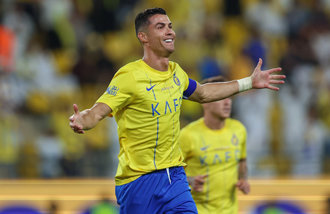Better defensive posture
The South Korean naval vessel Cheonan, which was broken in two by a North Korean torpedo attack one year ago, is a testament to the brutality of the Norths sudden provocations. The hull has grown rustier because of wind and rain from a year ago. To mark the first anniversary of the attack a week later, a Dong-A Ilbo editorial writer covering national defense visited Saturday the 2nd Naval Fleet in Pyeongtaek, Gyeonggi Province, where the broken vessel is kept. He paid his respects to the crewmen killed in the attack.
On March 26 last year, 46 of 104 Cheonan crew members lost their lives in the torpedo attack in waters near Baengnyeong Island, the northernmost area of the inter-Korean border. Naval diver Han Joo-ho also died while searching for the missing crewmen. The people will not forget the tears Hans comrades shed and military songs they sang at his funeral.
Just eight months after the attack, the North shelled Yeonpyeong Island on Nov. 23. In the Cheonan sinking, the South Korean Navy was caught off guard, and in the Yeonpyeong shelling, the South also failed to teach the North a lesson though the South Korean military knew the source of the artillery fire. Seouls fear of the situation escalating into an all-out war will further stoke Pyongyangs provocations.
Four months have passed since the Yeonpyeong attack. In the wake of the two North Korean provocations last year, Seoul established the Presidential Commission for National Security Review, which has discussed defense reform with the Defense Ministrys steering committee on defense advancement. As time goes by, however, reform plans presented by the government and military have either been tainted by egoism of the three services or have significantly been reduced in scale. Both the South Korean government and military pledged to prevent a recurrence of North Korean provocations shortly after the attacks, but these pledges have apparently disappeared into oblivion.
Some even say Seouls efforts to strengthen congruence in the military have ended in stop-gap measures. The government has given the chairman of the Joint Chiefs of Staff part of the authority for personnel and munitions management, which had been the domain of each chief of staff, along with the right to control military operations and information. Many say this is not fundamental reform, however. In strengthening the naval command for northwestern islands, the government just added 2,000 Marines and put it under the control of the commander of Marine forces. This is a far cry from the original plan of forming the command comprising the Army, Navy, Air Force and Marines to smoothly launch joint operations and pose practical threats to the North. This is also not in line with the duty of Marines, who have to focus on landing operations.
If the chairman of the Joint Chiefs of Staff lacks strong authority to select talented officers from each service, change is out of the question. Experts say the defense reform has fizzled out due to the presidents lack of leadership in the military.
South Korean armed forces still lack the ability to deal with North Korean threats alone. The North has nuclear weapons and is eager to develop intercontinental ballistic missiles with a range of thousands of kilometers. The Norths military might cannot be matched by South Korea. The former has a submarine capability as shown in the Cheonan attack, biochemical weapons, 200,000 special forces that outnumber the Souths number by 10 times, and artillery directly aimed at Seoul.
South Koreas military posture, which is heavily dependent on the bilateral alliance with the U.S., must be enhanced before Dec. 1, 2015, when Washington transfers its wartime operational command to Seoul. Recently, 500 U.S. soldiers in the 2nd Infantry Division of the U.S. Forces Korea were dispatched for a joint military drill between the U.S. and the Philippines. This shows that the U.S. can exercise strategic flexibility by frequently sending its soldiers stationed in the South to overseas. The South should fill the gap coming from such flexibility.
As seen in numerous occasions, the North has not been complacent about its seemingly victorious sudden attacks on the South. The communist country has never failed to retaliate if it perceives itself attacked by the South, and has sought to divert attention if its weak points are exposed. Peace will not come even if nothing happens under the Lee Myung-bak government. A recurrence of the Cheonan and Yeonpyeong attacks is also possible.
Even after the Yeonpyeong shelling, the North has continued to threaten the South with nuclear attacks. The South must never forget that all of the Norths activities and words are in line with its strategies and tactics to communize the Korean Peninsula. In the wake of the radiation leaks in Japan due to the massive earthquake and ensuing tsunami, nobody can say for sure that the Norths provocations will not trigger nuclear fear. South Koreas biggest security challenge is to brace for passivity the North can cause through a calamity on the entire Korean Peninsula in the form of a nuclear test, launching of nuclear missiles, or attack on nuclear power plants in the South.
All South Koreans should be on alert against inside enemies. Certain opposition party members and intellectuals still say the North had nothing to do with the Cheonan sinking. The South Korean parliament also had to spend three months in passing a resolution to blast the North for the attack due to objection from the main opposition Democratic Party, which is reluctant to call the North the main culprit behind the attack.
It is doubtful if the 48 crewmen of the Cheonan and the naval diver Han can rest in peace amid the dismal defensive posture of their country. Marking the first anniversary of the Cheonan sinking, the South Korean government and people must remind themselves of what they have to do to defend their country.







